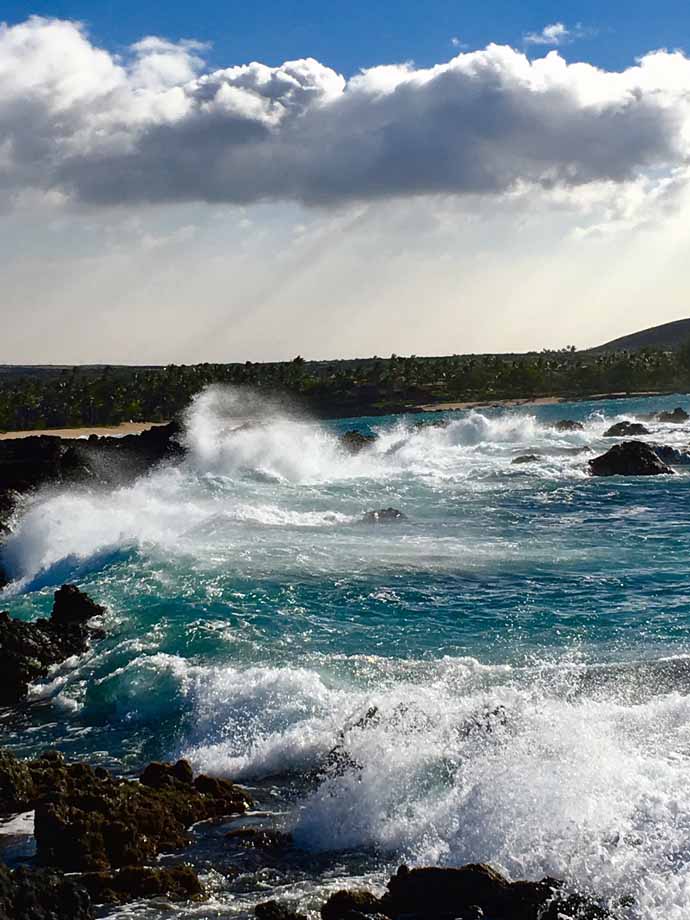
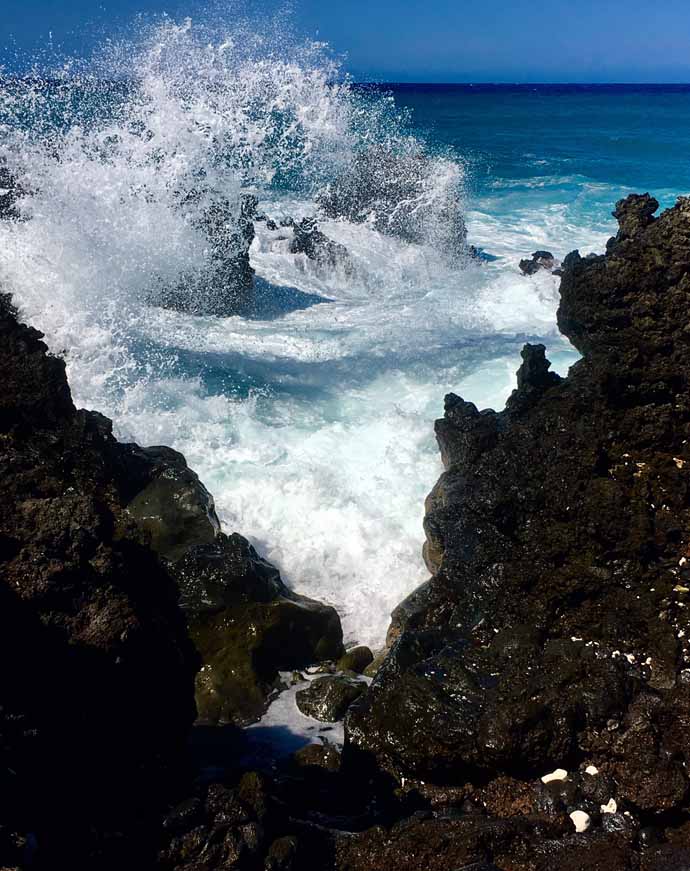
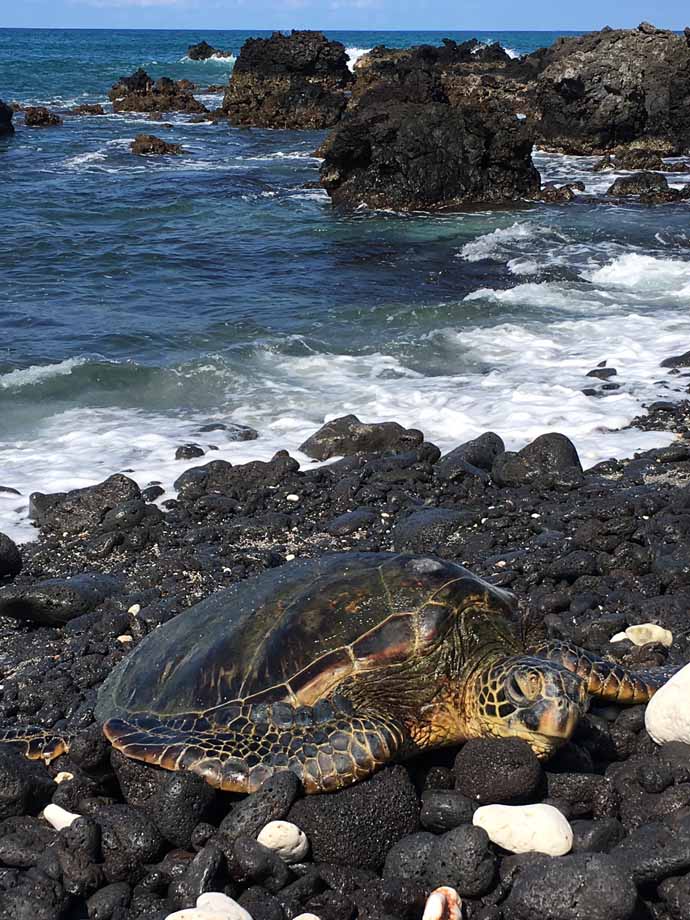
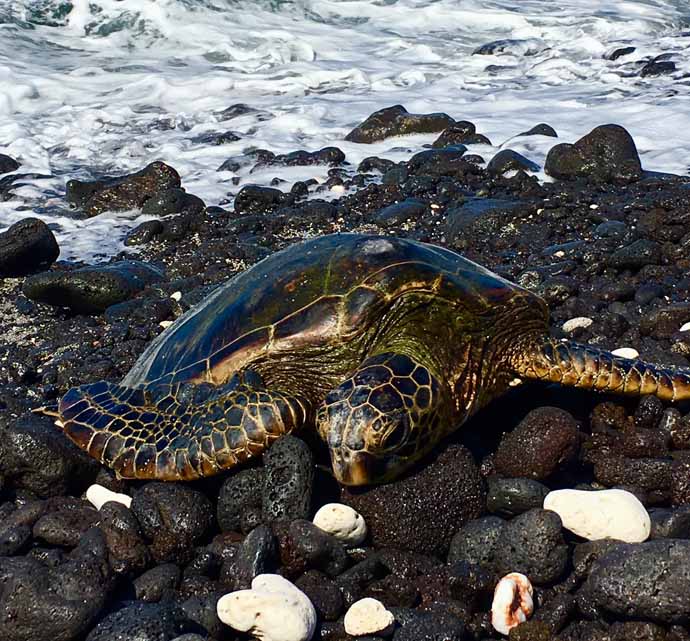
Thanks again to Bill McDowell for sharing his great photos
|
Thanks again to Bill McDowell for sharing his great photos 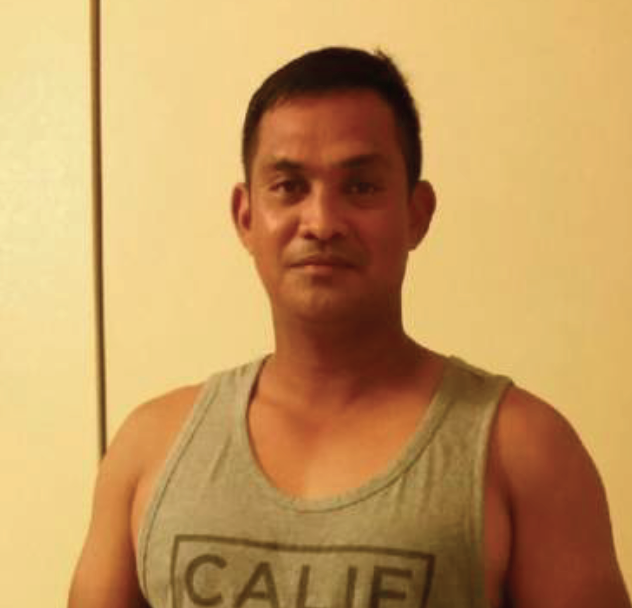 Richard Topenio
Richard Topenio’s last words to his wife were a promise made from a roadside in Kona early Saturday afternoon — he’d be home soon. It was the one promise in more than 25 years together that he was unable to keep. A little before 2 p.m., only minutes after the call with his wife ended, Topenio was hit by a southbound truck that veered onto the shoulder near the 98-mile marker of Queen Kaahumanu Highway. His injuries proved fatal, and Topenio, 42, was pronounced dead at Kona Community Hospital just before 4:30 p.m. Saturday. Police arrested the driver of the truck, 60-year-old Jeffrey Pelham of Kamuela, on suspicion of negligent homicide and operating a vehicle while intoxicated, according to a report from Hawaii County police. Pelham was later released pending further investigation. It was a tragic ending to a life that Topenio’s cousin, Joyce Davis, described as the quintessential story of one man’s selfless pursuit of a better life for his family. “He was born and raised in the Philippines and came to Hawaii in 1995,” Davis said. “He’d met his girlfriend prior to that in 1991, and before he left he promised her he was going to marry her and bring her to the U.S. so she could live the American dream she always wanted.” Topenio kept that promise, and the couple subsequently brought two daughters into the world — Arcy and Alliah, now 8 and 9 years old, respectively. Davis characterized Topenio as a humble man and a tireless worker who put his family above all else in his life. His mind was ever bent on earning enough money to make sure his children could attend college, if they chose, and live a good life in America. Topenio spent the last 13 years as a landscaping foreman at Hualalai with the Resort Management Group. His reputation as a model employee spread quickly throughout the area, as did respect for the man himself. “He was very responsive to all of the homeowners. Everybody loved him,” said Robin Ullakko, who owns a villa with her husband at Hualalai. “He labored constantly over the landscaping and the irrigation. He was just an incredible human being, a true gentleman and a kind person.” Tom Callinan, another resident of Hualalai who developed a close personal relationship with Topenio over more than a decade, expressed anger and disgust over the sudden loss of a man he respected so highly. “I’m in real estate,” Callinan said. “I have people who work for me, and Richard would have been a star among my people. There was no finer individual. I felt he was a friend.” As an expression of that friendship, Callinan gifted Topenio in December with the bike he was riding on the day he died. “His eyes were like a kid’s at Christmas time,” Callinan said. “He was so appreciative, you’d have thought I gave him a Mercedes.” Richard hadn’t ridden the bike much before Saturday’s accident. It required a small repair, which he made quickly, but he didn’t own exactly the right attire to match his prized, newly acquired possession. “He’d (recently) purchased shoes for his bicycle,” Davis said, one of Topenio’s more extravagant buys as he held most of his income in reserve for the welfare of those he loved. “He was really stoked about riding it, but he wanted the right shoes because he only owned a pair of work boots and slippers.” It wasn’t only Topenio’s family and clients that admired the selfless man who never complained, who always wore a smile, but also his employer and fellow employees. Maximus Yarawamai, owner of Resort Management Group, called Topenio an “unstoppable worker” who could be relied upon as much on the job as he could be at home. It was Topenio’s family, Yarawamai said, that fueled his passion for his work and served as the source of his unrelenting pride and happiness. “All of the other foremen, they were in tears that morning when we were having our meeting. It was just unbelievable,” Yarawamai said. “We took a whole day off with pay, our whole crew here, just so everybody could go home and be like the way Richard was with his family.” Topenio was the sole provider for his wife and daughters, as Cynthia made her life as a stay-at-home mother. Buthis family relied on him for even more than that. Cynthia is not only unable to drive a car, but struggles daily with a language barrier. After this school year ends, she will take her children home to the Philippines, as life in Hawaii without her husband has already proven untenable, Davis said. To help with the move and to allow Cynthia to bring her husband home to the Philippines with the rest of her loved ones, Davis is gathering up possessions — both her own and some of Topenio’s — to sell in order to raise the requisite funds. She’s also opened a PayPal account under the email address joycedavis110814@gmail.com for anyone who wishes to help a family now in dire need. Tina Clothier — executive director of People’s Advocacy for Trails Hawaii (PATH), which strives to create safe trails across the island for cyclists and joggers — said Topenio will be remembered by Kona cyclists as part of the Ride of Silence Day, scheduled this year on May 17. The memorial ride, she said, is held in concert with different groups all over the world to pay tribute to those who have died on public roads, allowing participants to reflect on the lives lost and consider how they can make the activity safer for everyone. The shoulder on which Topenio was riding, Clothier said, is not actually considered a bike lane, but is instead categorized by her organization as an “undefined space.” Plans for PATH’s Queen’s Lei project, which celebrated the opening of its first mile in April of last year, include a section of bike trail that would stretch all the way down Queen Kaahumanu Highway from Kaiminani Drive to the intersection with Palani Road on the HELCO easement some 25 feet clear of traffic. It’s still years from being realized and can’t be completed until the widening of the highway is finished. Delays to construction have pushed back the completion date to the end of 2018. Had the section of the Queen’s Lei already been built, it would have provided an alternative for Topenio, who Saturday had no choice but to ride on the less protected roadside. She added part of PATH’s legislative priorities this year are several bills in the state legislature that would establish a 3-foot passing zone between cyclists and motorists to increase safety. According to Senate Bill 742, which addresses the issue, “40 percent of all cyclist fatalities are caused by a motor vehicle striking a cyclist from behind.” A closed casket viewing service will be held for Topenio’s family and friends Sunday at 11 a.m. at the family home, located at 74-5221 Kauwela Place in Kailua-Kona. By Max Dible West Hawaii Today mdible@westhawaiitoday.com KAILUA-KONA
NOTE: If you would like to help Richard’s family, Tom Callinan, a member, is accepting donations. Make a check out to Richard’s wife, Cynthia Topenio and get it to Tom and he will pass it on to Cynthia.
Club Membership is providing a complimentary shuttle to this event. Minimum 6 passengers. I have a 12 pax van currently secured.Sign up with Club Concierge 808 325-4717 or 808 325-8450 to catch the shuttle at Ke’olu on Sunday, February 12, 2017.
Join Happy Hundreds at 2PM at the Hualalai Golf Course this FridayHigh winds caused the Mitsubishi Electric Championship at Hualalai to be called after 36 holes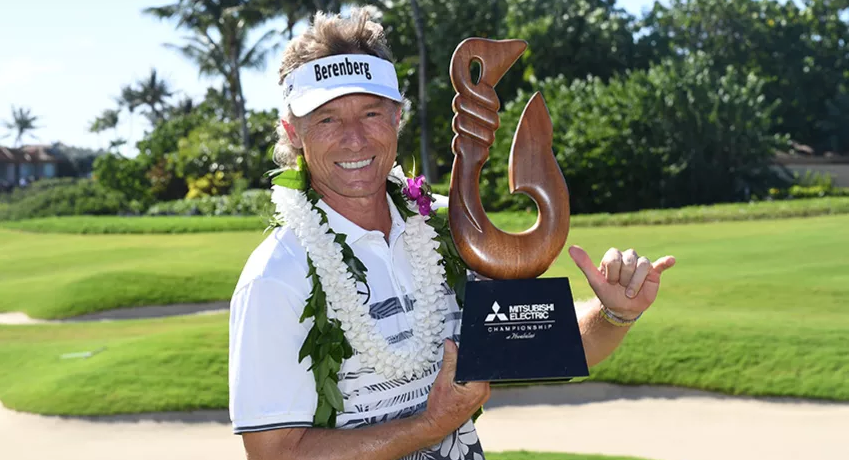 Bernhard Langer won for the 30th time on PGA TOUR Champions to sit in second place alone on the all-time list. (Chris Condon/PGA TOUR) 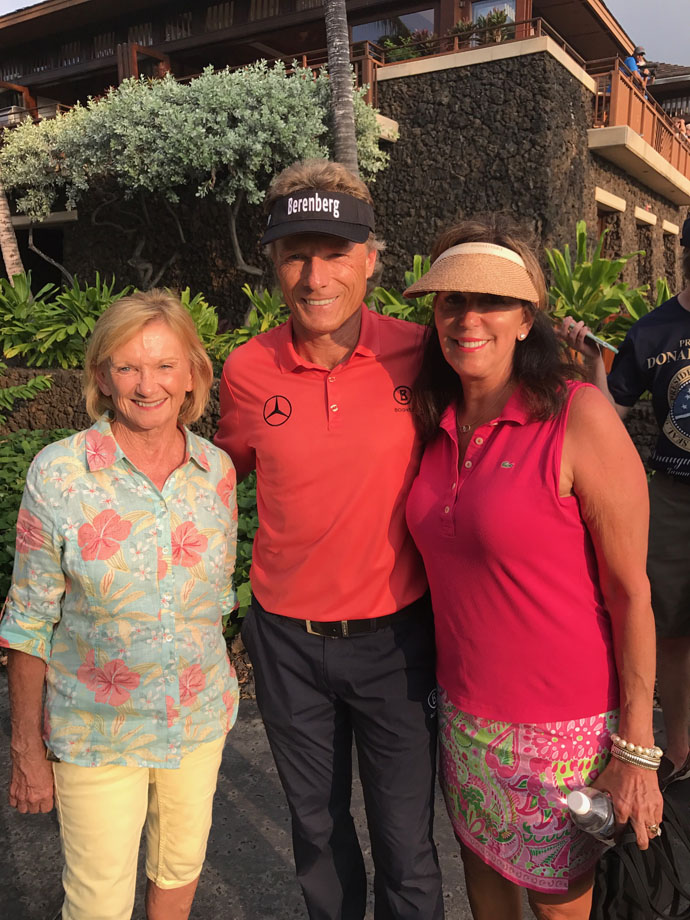 Member, Pat O’Dell and friend, Sharon Peterson, celebrate Langer’s win with him KAILUA-KONA, Hawaii – Bernhard Langer won the season-opening Mitsubishi Electric Championship at Hualalai to claim his 30th victory on PGA TOUR Champions. He now sits in second place alone on the all-time list, trailing only Hale Irwin (45 wins). “It’s very special because it’s maybe my favorite tournament out here,” Langer said. “To start the year off in this fashion, just winning the Schwab Cup last year and now my caddie’s wearing the Schwab Cup jersey again, it can’t be much better. And then to have won on the day when we celebrate our 33rd anniversary, I have my kids and my wife (Vikki) with me, that doesn’t happen very often. It’s quite emotional for me, pretty neat.” The event was shortened to 36 holes due to heavy sustained winds of 40-plus miles per hour. Sunday’s forecast called for similar conditions. At one point during Saturday’s final round the scoring average was 80.287. Scoring conditions were ideal during the first two days. Langer shot 64-65 during the first two rounds while Fred Couples was just one shot back after a pair of 65s. “It’s not the way I wanted to win,” Langer said. “I was ready to compete and battle it out, but I don’t make the rules. … (Sunday) would have been more wind, supposedly. So this was really the right decision.” Added PGA TOUR Champions Vice President of Rules and Competition Brian Claar: “The winds kept getting stronger and the golf course became unplayable. Balls were going up by the hole, rolling back off the green. Four or five of the greens you couldn’t play. The forecast is to get as bad or worse. (Sunday) does not look any better. So taking everything into consideration, golf course, flights and the fact that it’s just not getting any better, we’ve come to a tough decision that it’s a 36-hole tournament.” It’s the 11th straight year Langer has won at least one event in a PGA TOUR Champions season, tying Hale Irwin’s mark. Langer also won the event for the third time, marking the fourth time in his PGA TOUR Champions career that he has won an event three times. The last time a round on PGA TOUR Champions was suspended due to high winds was in 2010 in Naples, Florida. Langer is coming off his third consecutive Charles Schwab Cup and was named the PGA TOUR Champions Player of the Year for 2016. January 21, 2017
HONOLULU — Six carefully selected scientists will spend the next eight months living inside a man-made dome on a remote Hawaii volcano as part of a human behavior study that could help NASA as it draws up plans for sending astronauts on long missions to Mars. The four men and two women moved into their new simulated space home Thursday afternoon on Mauna Loa, settling into the vinyl-covered shelter of 1,200 square feet, or about the size of a small, two-bedroom home. They will have no physical contact with people in the outside world and will work with a 20-minute delay in communications with their support crew, or the time it would take for an email to reach Earth from Mars. The NASA-funded project will study the psychological difficulties associated with living in isolated and confined conditions for an extended period. “We’re hoping to figure out how best to select individual astronauts, how to compose a crew and how to support that crew on long-duration space missions,” said principal investigator Kim Binsted, a University of Hawaii science professor. NASA hopes to send humans to an asteroid in the 2020s and to Mars by the 2030s. The team members on the dome project include engineers, a computer scientist, a doctoral candidate and a biomedical expert. They were selected from 700 applicants who were subjected to personality tests, background checks and extensive interviews. “When I started, my biggest fear was that we were going to be that crew that turned out like Biosphere 2, which wasn’t a very pretty picture,” said mission commander James Bevington, a space scientist. Biosphere 2 was a 1990s experimental greenhouselike habitat in Arizona that became a debacle. It housed different ecosystems and a crew of four men and four women in an effort to understand what would be needed for humans to live on other planets. The participants were supposed to grow their own food and recycle their air inside the sealed glass space. But the experiment soon spiraled out of control, with the carbon-dioxide level rising dangerously and plants and animals dying. The crew members grew hungry and squabbled so badly during the two years they spent cooped up that by the time they emerged, some weren’t speaking to each other. The University of Hawaii operates the dome, called Hawaii Space Exploration Analog and Simulation, or HI-SEAS, and NASA has dedicated more than $2 million to the various studies at the facility. Scientists previously lived in the dome for two other long-term NASA-funded stays — one lasting a year, the other eight months — to study food requirements and crew cohesion. There are a number of other Mars simulation projects around the world, but one of the chief advantages of the one in Hawaii is the rugged, Marslike landscape, on a rocky, red plain below the summit of the world’s largest active volcano. The dome has small sleeping quarters for each member, a kitchen, laboratory and bathroom. Unlike the Biosphere 2, it will be an opaque structure, not a see-through one, and it will not be airtight. Also, the crew will eat mostly freeze-dried foods, with some canned goods and snacks brought in, including one of Hawaii’s favorites, Spam. To maintain the crew’s sense of isolation, bundles of food will be dropped off at a distance from the dome, and the team members will send out a robot to retrieve them. Participants will not be confined to the dome but will wear spacesuits whenever they step outside for geological expeditions, mapping studies or other tasks. They will also wear instruments around their necks that measure their moods and proximity to other team members, and will use virtual-reality devices to simulate familiar and comforting surroundings to help them get through the mission. By CALEB JONES  The sign on the 17th hole and the sign at the entrance to Hualalai are constructed every year using lava and dead coral from scratch. (The Board with the lettering is reused every year) 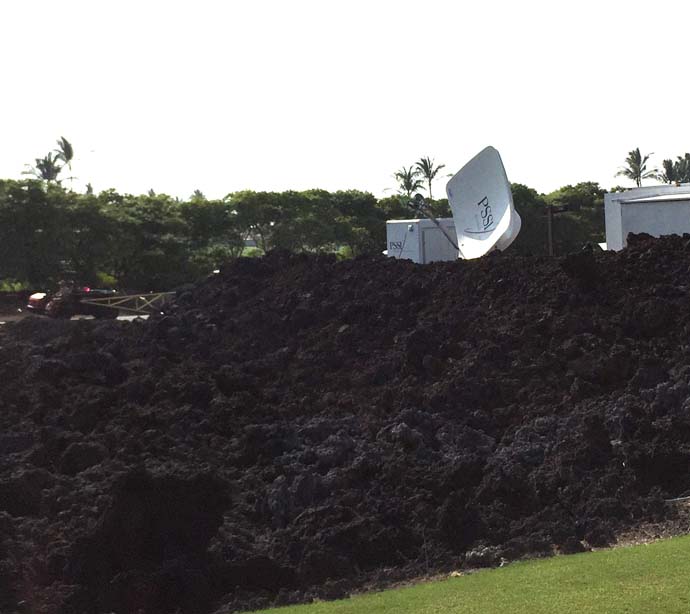 This gigantic dish installed probably to send the videos up to the satellite and then distributed through the golf channel.  As soon as Thursdays tournament ended there was almost an endless parade of landscape equipment heading out to make sure the course is perfect for Friday.
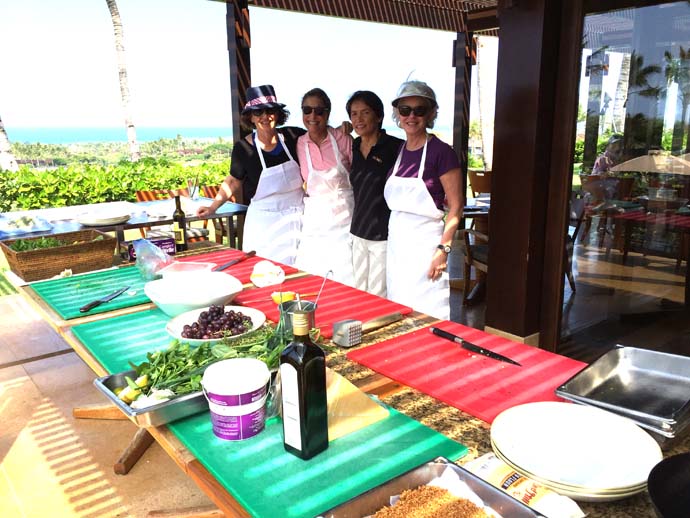 From the left: Susan Mendelson, Susan Johns, Sue Francisco and Susan Johnson
L/R: Kay Cobb, Tracy Abrahms, Robin Ullakko, Linda Southern, Diane Windler, Debi Justice, Joy DriemannFrt. Row: Patti Nickoll & Helen GuiltinanOther ladies; Kandy Holley, Yvonne Khouri Morgan
Erin Lee and her merry staff entertained us.  A great shot from space of our island with snow on Mauna Kea and Maun Loa.  Two of our youngish members brought their skis and hit the slopes this past week.
The new golf carts are in up at Ke ‘Olu. The new carts come with usb outlets so you can plug in your phone and/or your speakers. They also have “semi” bucket seats that are pretty comfortable.
Here is the new menu when there is no other offerings in the dining room:
And here is the menu for nights when there are additional choices, like Friday Nights
Here it is, yet again, always delightful:
Thanks to Becky Holman |